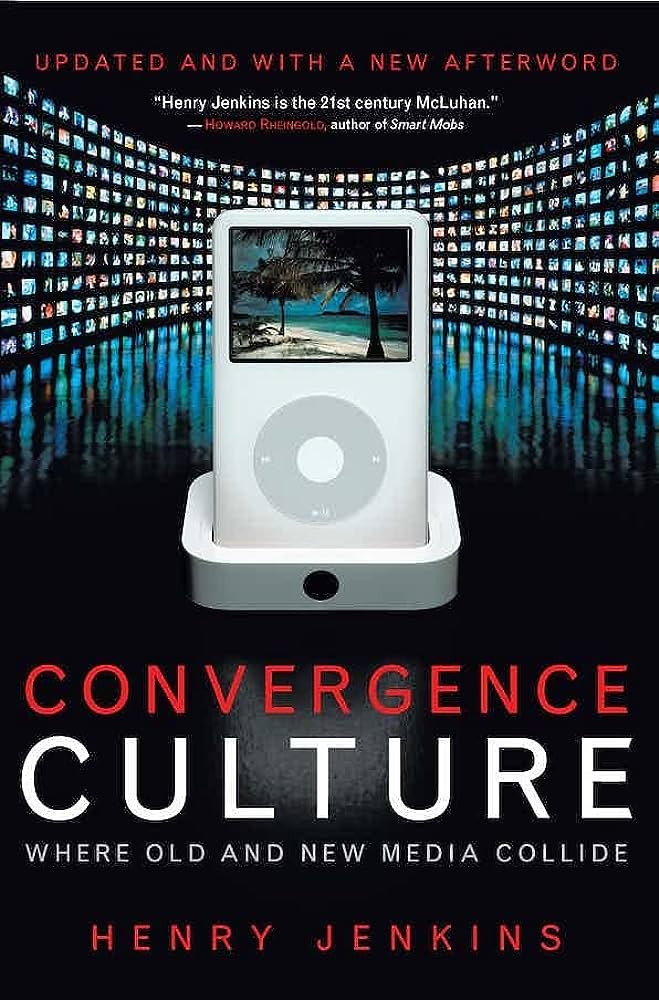This article is an illustrated and resourced summary of “Adaptation” by Trevor Elkington from Mark J.P. Wolf’s “Encyclopedia of Video Games: The Culture, Technology & Art of Gaming” (2021).
Video game adaptations specifically draw from source material rooted in other mediums, notably film, television, or print media like novels and comics. This tailored approach introduces distinct practical, cultural, and artistic challenges.
Despite adaptations being a longstanding aspect of the video game industry since its inception, recent extensive integration within the broader entertainment landscape has propelled a rapid surge in the number of adaptations introduced annually. Correspondingly, there’s an increasing trend of films, television series, and novels being inspired by video games, indicative of a broader movement termed “media convergence,” as theorized by media scholar Henry Jenkins (see Figure 1). This phenomenon is driven by both technological innovations that have woven media into our daily lives and the consolidation of media production under large corporate conglomerates such as Time Warner and Viacom (now: Paramount Global). These conglomerates aim to optimise content across various commercial and technological platforms to mitigate risk and enhance profitability.

The exponential growth of the video game industry over the past decades has naturally prompted the entertainment industry to capitalise on its popularity. However, the commercial and creative struggles of games like Atari’s E.T.: The Extra-Terrestrial (1982) have cast shadows over public perceptions of video game adaptations (See Figure 2). E.T. is infamous for being one of the most significant failures in video game history, symbolising the industry crash of 1983. It became emblematic of the perceived pitfalls of games based on movies, often viewed as low-quality products driven solely by commercial motives.

Despite a consistent increase in the presence of video game adaptations within the industry, a perception has persisted that these adaptations are hastily produced at the cost of quality for short-term financial gains. Review scores from critics tend to support this notion, with video game adaptations typically receiving lower average scores compared to non-adaptations. Factors such as conflicting development processes, adaptations primarily targeting children’s franchises rather than appealing to adult critics, and an inherent skepticism toward adaptations collectively impact the success of these ventures. Although exceptions like Vivendi’s The Chronicles of Riddick: Escape from Butcher Bay (2004) exist.
Likewise, films and television series based on video games have generally encountered negative critical reception. Early examples like Super Mario Bros. (1993) and Street Fighter (1994) often altered characters and plot points to accommodate the demands of the cinematic medium, sometimes at the expense of the source material’s integrity. These modifications, although necessary for storytelling, risk alienating the core fan base by deviating from the essence of the source material.
Additionally, the difference in financial stakes and economic scale between the film and television industries and the video game industry has led to an imbalance of influence. This often results in video game originators struggling to maintain creative control over their products.
While film and television adaptations, both to and from video games, represent a significant portion of the adaptation trend, there’s a simultaneous expansion of adaptations from print media, primarily comic books and graphic novels. Titles such as 2K’s The Darkness (2007) and adaptations of the DC and Marvel universes demonstrate how ideas originating in video games can be translated into alternative forms, allowing audiences to engage with them beyond gaming consoles (See Figure 3).

The surge of adaptation within or inspired by video games can be traced back to the convergence of entertainment and communication conglomerates. Corporations like Sony, Time Warner, and Viacom, with interests spanning film, television, publishing, and video games, naturally facilitate a fluid exchange of ideas across mediums. The focus shifts from a specific medium to the franchise itself. As Jenkins notes, “Storytelling has become the art of world building […] The world is bigger than the film, bigger even than the franchise […] World-making follows its own market logic” (Jenkins 2006, 114). Examples like George Lucas’ Star Wars and Peter Jackson’s Lord of the Rings demonstrate that the central intellectual property (IP) holds more significance than any single product within the cycle. Consequently, entertainment conglomerates increasingly center planning around the IP, seeking to cross-pollinate within their own domains or collaborate with external production partners. As a result, the trend of cross-media production is likely to continue expanding as long as the entertainment industry perceives value in adapting central franchises across diverse forms and genres.
Further Reading
Jenkins, Henry. Convergence Culture. New York: New York University Press, 2006.
This article is an illustrated and resourced summary of “Adaptation” by Trevor Elkington from Mark J.P. Wolf’s “Encyclopedia of Video Games: The Culture, Technology & Art of Gaming” (2021) and has been copyedited with Chat-GPT 3.5. This article has been written to make Wolf’s Encyclopedia and its entries more accessible.
